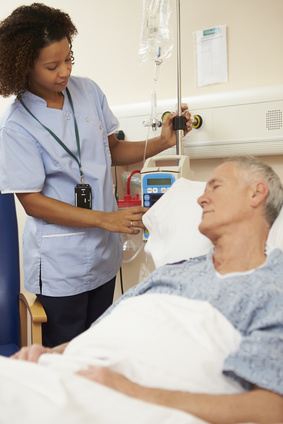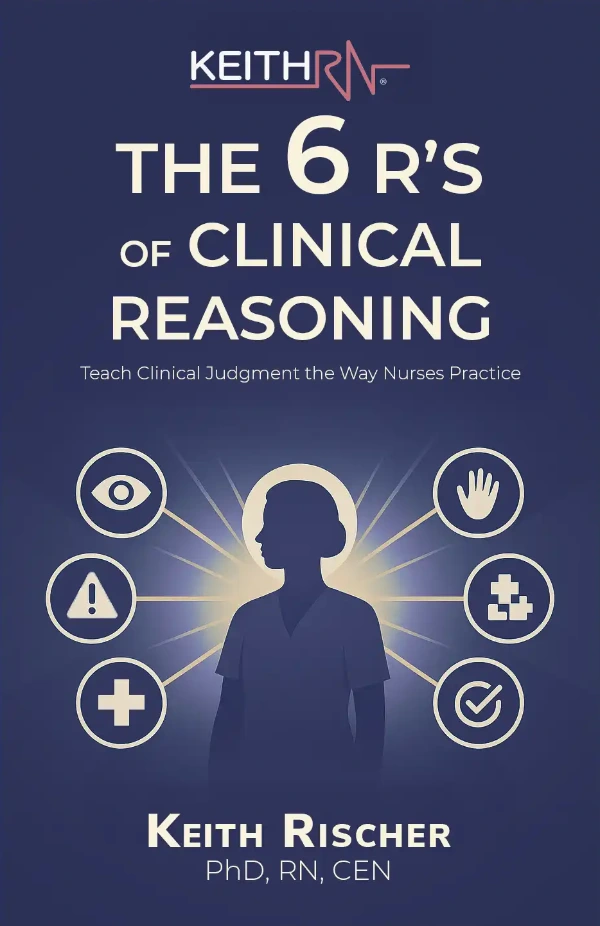
I was on the rapid response team and received a call from a nurse on a med/surg floor regarding her patient who had a heart rate higher than 200.
When I arrived, the patient was pink, warm and dry, and did not appear to be in any distress. The pulse oximeter read 210, but the nurse did not validate this concerning finding by assessing the patient directly by checking the patient’s radial or apical pulse.
When the pulse of the patient was checked it was 90 and no cause for concern, though a valuable lesson was learned by the nurse!
Another day a rapid response was paged for an oximeter reading that was in the low 80s and did not improve when the oxygen was increased from 2 to 6 liters by nasal cannula.
When the rapid response nurse did a complete assessment, it was discovered that the oximeter was not on the patient’s finger but lying next to him in the bed.
Had this nurse taken the time to directly assess the patient, validate the accuracy of the number that was collected, and ensure that the oximeter was on the patient, this rapid response page would not have been paged.
Takeaways in Practice
What are the takeaways for both students and educators from these two clinical scenarios?
Because of clinical inexperience, one of the most common mistakes that new nurses, make, is to focus on vital sign NUMBERS and not directly assessing the PATIENT to validate what is collected.
In last week’s blog, I discussed why vital signs are not just a routine task but the nurse must recognize and understand the significance of data collected.
Here are some key takeaways to strengthen critical thinking in the clinical setting:
When vital signs are collected, remember to do two things.
- Determine the current baseline of each vital sign for your patient
- TREND when you compare what is currently collected to the most recent
Once the patient has been assessed, here is a brief overview of the physiological significance. Then the nurse will better understand why vital signs are always vital.
Temperature
In most patients, the body temperature will be elevated with infection and is a natural inflammatory response to increase the production of neutrophils as well as make it less hospitable for invaders to thrive and multiply.
The very young (less than two months) or the elderly will have an immature or weakened immune system and will not always have an aggressive inflammatory response with resultant elevated temperature.
A low-grade temperature less than 101 F (38.3 C) will be clinically significant with this population. Hypothermia can also be seen clinically in these populations and is a clinical RED FLAG for sepsis.
Heart rate
In many care settings, the collection of vital signs is done electronically with non-invasive blood pressure cuffs and pulse oximeters that read the heart rate at the same time. To save time, some nurses rely on the numbers that are collected electronically without validating the accuracy through palpation or auscultation.
Be sure to palpate or auscultate your patient to ensure that it is accurate. Determine if it is regular or irregular.
If it is irregular, the most common arrhythmia that can cause this is atrial fibrillation. If an irregular heart rate is present be sure to check if your patient has a history of this rhythm. It could also be caused by frequent PVCs. If heart rate irregularity is present be sure to check the potassium and magnesium level in the medical record as these electrolytes are essential to normal cardiac function.
CO=SVxHR
Remember the relevance of CO=SVxHR to clinical practice.
The earliest compensatory response to any volume depleted state including shock and sepsis is to elevate the heart rate to maintain adequate cardiac output.
When this relationship is understood by the nurse, the significance of any trend or elevation of heart rate becomes a clinical RED FLAG.
Be sure to note if your patient is on a beta blocker because the heart rate will not elevate because of the beta blockade, but will have other concerning findings such as increased resp. rate or pale, cool, moist skin.
Respiratory rate
Take the time to carefully note the actual respiratory rate of your patient. Don’t guesstimate!
An elevated respiratory rate is always a clinical RED FLAG and is an EARLY indicator of hypoxia or shock.
What is the WHY of an elevated respiratory rate?
An increase in the respiratory rate is a compensatory response to maintain adequate oxygenation and is elevated with hypoxia or any shock state. An elevated RR is expected with elevated temperature, pain, or recent activity.
Blood pressure
One thing I often find in clinical practice is that the blood pressure cuff is not the right size for the patient. To ensure the accuracy of blood pressure, be sure that the cuff is the right size!
If a cuff is too big the numbers collected will skew lower and if the cuff is too small will skew higher.
Remember that a decrease in blood pressure is a LATE finding of any shock state. If this is when a problem is recognized, it may be too late, and an adverse outcome or even patient death can result.
Oxygen saturation
Pulse oximeters are notoriously inaccurate if they are not on the finger correctly or if circulation is impaired in any way. Therefore do not record the heart rate on a pulse oximetry.
Take 15 seconds to validate the radial pulse and ensure that what is collected by palpation is within a few beats of what the oximeter is demonstrating.
If the heart rate correlates the accuracy of the reading is validated.
The opposite is also true. If the heart rate does NOT come close to correlating with the oximeter reading it is NOT accurate.
Oxygenation trends will also decrease with any hypoxic or shock state and will correlate with an elevated respiratory rate if a problem is present.
Note if your patient has had increasing oxygen needs going for example from 2 to 4 liters to maintain adequate O2 sats. If so, step back and ask yourself WHY? A problem is likely present and rescue is needed by the nurse!
Takeaways
What did you take away from today’s blog? If you remember nothing else, be sure to remember the following:
- Always assess the PATIENT in addition to the numbers that are collected.
- UNDERSTAND fundamental physiological significance and pathophysiology of each vital sign
- TREND all vital signs collected to the prior and establish a trend to determine if a problem may be present.
In Closing
Vital Signs must never be seen as just a routine task performed by the nurse, but a thinking nurse is vigilant and recognizes that vital signs are always vital.
When the nurse recognizes and understands the physiological significance of each vital sign, they will be “practice ready” to recognize a problem EARLY and prevent an adverse outcome that can include patient death.
Be that nurse and you will be a superhero in practice!
Relevant Past Blogs
- How Not to Be “That Nurse!”
- Why Educators Must Emphasize Preparing Students for Practice not Only the NCLEX®
- Three Things Students Must Know to THRIVE, not Just Survive Nursing Education
Comment Question:
How do you help your students to remember that vital signs are always vital?
Comment below and let the conversation begin!
Keith Rischer – PhD, RN, CEN
As a nurse with over 35 years of experience who remained in practice as an educator, I’ve witnessed the gap between how nursing is taught and how it is practiced, and I decided to do something about it! Read more…
The Ultimate Solution to Develop Clinical Judgment Skills
KeithRN’s Think Like a Nurse Membership
Access exclusive active learning resources for faculty and students, including KeithRN Case Studies, making it your go-to resource.





